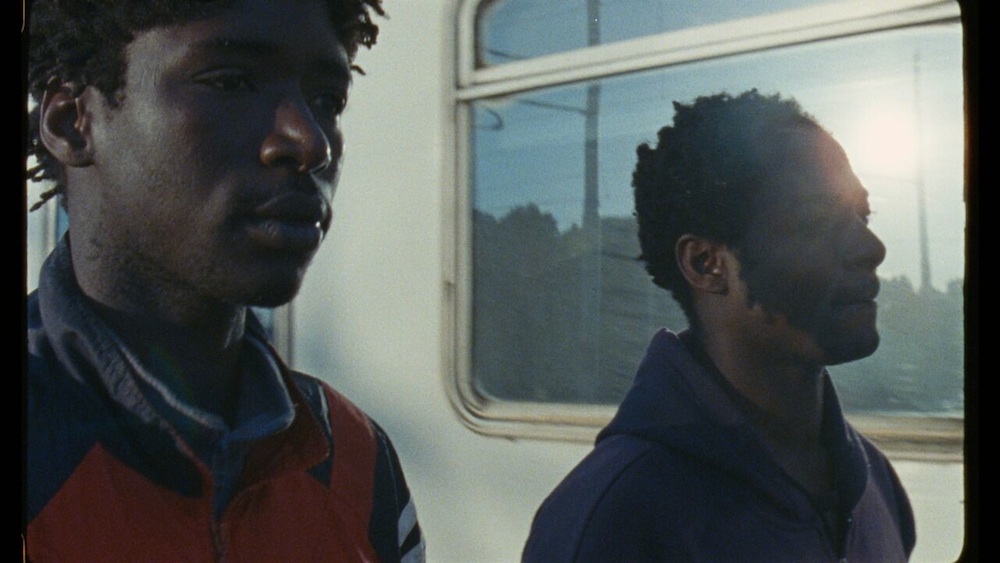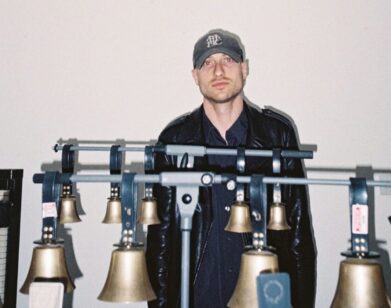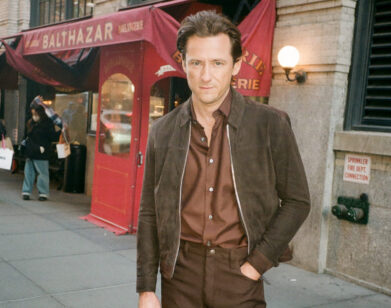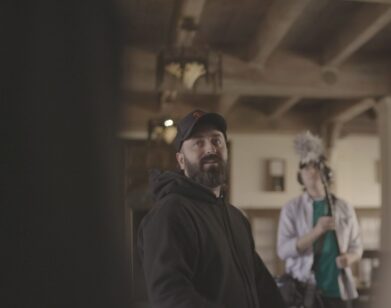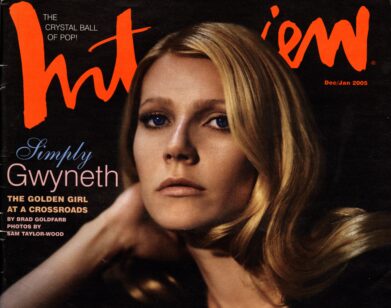Discovery: Jonas Carpignano
When the audience meets Ayiva (Koudous Seihon) and Abas (Alassane Sy), they are somewhere in Algeria. They have traveled largely by foot from Burkina Faso and are on their way to Libya and then Italy. Their companions are strangers from all over North Africa: some plan to stop in Italy, but many will move on to France, Sweden, and Germany. For Ayiva and Abas, Southern Italy is the goal because one of their friends has made the journey before them. They have seen his photos on Facebook, smiling on a night out surrounded by European girls.
But Mediterranea, the debut feature film from writer-director Jonas Carpignano, isn’t about Ayiva and Abas’ journey or the Algerian bandits and smugglers pushing captain-less boats out to sea they encounter on the way. It is about what happens when they arrive in the European promised land and are met with xenophobia, racism, failed bureaucracy, tent cities, and supremely underpaid manual labor. The audience is never told much about Ayiva and Abas’ backgrounds, only that Ayiva has left a daughter and sister behind who are counting on him for money. Everything else you must discern from their interactions with one another and the characters around them: the Romani pre-teen hustler Pio, the young daughter of their boss Marta.
None of the leading characters in Mediterranea are played by professional actors; rather it was Seihan’s own journey from Burkina Faso that inspired much of the story line. The dialogue shifts through a series of languages including French, English, and Italian. “I wrote it all in English,” says Carpignano of the script. “There are a number of illiterate people in the cast, so the script was something that I would literally just read to them. Their memorization process wasn’t necessarily having a script; it was through actually doing the scene a few times. But at the same time, 90 percent of the scenes are things that actually happened to the people playing those roles,” he continues. “So 90 percent of the time I would just write their words into the script. They never really had to say anything that they hadn’t said before or make sense of a concept that wasn’t already something they understood very intimately.”
Carpignano’s own life could be the subject of a film. Born in New York to an African-American mother and an Italian father, Carpignano was raised between a West Indian, Domenican, and Puerto Rican community in the East Bronx and “a family of artists and cinema-goers” on the outskirts of Rome. “Two very different realities, but both realities that I felt very, very part of,” he says. He went to the prep school Fieldston in Riverdale, followed by Wesleyan and a stint at NYU for graduate school before moving back to Italy. Before Mediterranea, he made a handful of shorts including another film with Seihan about the 2010 race riots in Southern Italy, A Chjàna (2012), and A Ciambra (2014) about Pio, one of the characters in Mediterranea. A Ciambra won the discovery award at Cannes in 2014, and Carpignano was invited to take part in the Sundance Labs, where his mentors included Gyula Gazdag and Joan Tewkesbury. “She’s a legend,” Carpignano says of Tewkesbury. “I’ll never forget sitting with her one script session [for Mediterranea], her never having been to this place in Italy, not really knowing anything, and asking the exact questions about the characters that I felt they would have asked me had they read one of those underdeveloped scenes in the film. It was unbelievable.”
After debuting at Cannes last May, Mediterranea screened at film festivals around the world including the Toronto International Film Festival, the London Film Festival, and the Cairo International Film Festival. As of Friday, it is now showing at the IFC Center in New York and available via Amazon and other VOD platforms.
AGE: 31
HOMETOWN: The East Bronx, New York.
CURRENT HOME: Gioia Tauro, Calabria, Italy. It’s the town where the film takes place.
INTRODUCTION TO CINEMA: I decided that I was going to do film when I was 18 and got into Wesleyan. My grandfather was a filmmaker. I wasn’t making films as a kid—I can’t say that I got a really early start—but it was always something that felt very close. I think the hard thing for people trying to get into film is the idea that it’s an insurmountable mountain, and for me it was never like that. It was not necessarily easy, but I knew that it was something attainable because I had seen people in my family do it.
My knowledge of film as an art always came from Italy; it came from my grandfather. I grew up on neorealism and the giallos—the Italian horror films. To me, that was the difference between film just being escapism and something being seen as an art. My grandfather instilled that in me. When I was in the Bronx, I remember my movie-going experiences as seeing Terminator 2 at Bay Plaza theater. It was a much different scale, a much different purpose for going to the films.
GRADUATE SCHOOL DROP OUT: What made me leave NYU? Geography more than anything. Being in New York and wanting to tell films not in New York. I’ve never wanted to tell a story in New York, it hasn’t happened for me yet. I always knew, even when I first went into film school, that I wanted to go back and make these films in Italy. When I ran against the wall where the NYU structure didn’t really allow for me to travel, I said, “I’ll leave this aside and finish making films.”
FIRST FILM JOB: I was definitely a PA, a runner. When I moved back to Italy I did a whole bunch of films as an assistant director. My last one as an assistant in Italy was a Spike Lee film called Miracle at St. Anna (2008). I did something that very few people in Italy do—my American side—and I drove to a place where I knew Spike Lee was getting an award. I just rolled up there and went to this master class, and after the master class I was like, “Hey man, can I speak to you?” And he was like, “No, no. I’m busy.” Then he looked at me and he was like, “Where are you from?” He heard that I didn’t have an Italian accent. I was like, “Oh, I was raised in the Bronx.” “You’re from the Bronx? The Boogie Down? What do you want?” We started speaking. I told him my deal—that I had been an assistant director in Italy the past few years and I really wanted to work on his film. A few months later he called me and was like, “Come work on the film.”
MEDITERRANEA’S LEADING MAN: I met Koudous [Seihon] when I went to do research for the short film [A Chjàna, 2012]. I was casting down there, I was actually looking for people who had participated in the riot to bring that experience to the screen. I met him almost immediately; he was leading the march. He had a megaphone in his hand and was super charismatic and was speaking five languages. For one person to stick out like that, it was just like a light went off in my head. At first he didn’t want to do the film, which was kind of a blessing because I had to convince him and we became good friends in a short period of time. He didn’t want to be in it because he was so busy. One year after the riot there was so much that he was organizing with the various labor groups in Italy; he just felt that he didn’t have time. Once we actually made the short and created this relationship, he was on board with making a film more about his life and that’s when he opened up to me. He told me his entire life story. I went down to Burkina Faso to visit his family and I did part of the journey he did. As soon as I got back we got a place together and have been living together ever since.
Things have gotten a little bit better in terms of what’s depicted in the film for him—he has a document now, we’ve gotten him visas to travel to London and the U.S.—but we still haven’t gotten to the point where he can bring his family over. That involves making more money and being able to show that you have a more permanent residence in the country.
THE SUPPORTING CAST: There were some people that I didn’t [originally] write. There were people that I met and when I saw an interaction I would say, “This brings something out of Koudous that I think is important for the people to know, so let’s put this person in the film.” In the first draft of the film there was no Lizzie, the girl who adds that party element in that one scene. When I met her and [Koudous and I] started going out with her, seeing the two of them interact made me realize that that was an important dynamic to incorporate into the film. The same thing with the little girl. I had written a generic little girl into the film, but we were at dinner one day and Koudous disappeared. Eventually I was like, “Where the hell is he? He’s been gone for too long, this is weird.” I went into the restaurant and saw him with a little girl and they were singing karaoke together and playing games on an iPhone. She was being kind of a brat in the way she is [in the film], but she was also very, very curious about him, and she wasn’t scared of him and some kids are. It was about picking things out from my everyday life, giving them a dramatic purpose, and letting them bring a lot of new characters.
IMMIGRATION AND ITALY: In terms of the actual geography and mechanics of immigration, it’s always been a bigger burden for Italy because we’re in the front line. We don’t have a huge army, a huge navy; we’re not necessarily equipped to deal with this massive influx of people. On a very bureaucratic level, it was something we didn’t really know how to deal with. Up until recently, Italy was constantly calling the E.U. to help: “This isn’t an Italian problem, this is an E.U. problem.” That tension translated into the way people accepted immigrants once they planted their roots in small towns and it caused xenophobia and tension with the migrant population, especially in the earlier years around 2008. I think now it’s changed quite a lot because some parts, at least in southern Italy, have come to accept this not as a fleeting issue, a temporary crisis, but that there will be a black presence in these communities from now on. While I don’t think we’ve gotten to the point where everyone is super happy about it, accepting it as a reality is leading at least some portion of the population to realize that integration is something that we’re going to need to strive for.
UP NEXT: I just finished another draft of the next thing we’re going to make, which is a film about Pio. Pio is just like that [in real life]. It’s alarming and hilarious. He’s part of the Romani community down there, so it’s another completely marginalized community. He’s a product of that sort of segregation and isolation, and because of that he’s grown up in immense poverty, which is why he grew up so fast and is so street smart. The Romani community has been around for generations, and now we have this marginalized community in the African population, which has just shown up, and the film is trying to explore a relationship between the two—if they’re going to learn from each other or if the African community is destined to have the same fate as the Romani community. So, trying to look at these two worlds and the collision between them through Pio and Ayiva’s relationship. We take real people from the town and let them tell their own story.
MEDITERRANEA IS CURRENTLY SCREENING AT THE IFC CENTER IN NEW YORK. IT IS ALSO AVAILABLE VIA VOD PLATFORMS SUCH AS AMAZON.

